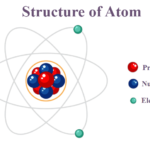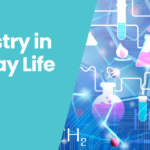Elements and compounds are the two forms in which pure substances exist.
1. Carbon:
Carbon exhibits allotropy and shows maximum catenation.
- Carbon occurs both in free state as diamond, coal etc. and also in the combined form as CO2.
- Diamond is one of the allotropic forms of carbon and is the purest form of natural carbon. It is the hardest natural substance.
- Graphite is also an allotropic form of carbon, which is very soft and slippery. Graphite are prepared artificially by Acheson process.
- Fullerene (C60) looks like a soccer ball. It contains 20- six membered and 12-five membered rings of carbon atoms.
- Graphene is an allotrope of carbon. It is a strong substance and used as a conducting material for touch screen, LCD and LED.
Compounds of Carbon Carbonmonoxide(CO)
- Carbonmonoxide(CO) combines with haemoglobin to form carboxyhaemoglobin which is not able to absorb oxygen and as a result of this, suffocation takes place (Asphyxi(a).
- The death of persons in closed rooms with wood, coal or coke fires and in closed bathrooms with gas geyser is due to the formation of carbon monoxide.
Carbondioxide (CO2)
- 0.03-0.05 percent in atmosphere.
- Solid CO2 is known as dry ice. It is used in refrigerators under the name drikold. It is used in transport of perishable food materials as it provides cold as well as the inert atmosphere.
Carbides
They are the compounds of carbon with metals or electronegative elements.
- Destructive distillation of coal gives products like coal gas, gas carbon, coal tar and ammonical liquor.
- Lamp Black is also known as Soot.
2. Nitrogen:
- Nitrogen is a neutral gas and is neither combustible nor a supporter of combustion.
- In air – 79% of Nitrogen is present (by volum(e). In combined state, nitrogen is found as nitrates (Chile saltpetre—sodium nitrate(NaNO3),Indiansaltpetre— potassium nitrate (KNO3)
Compounds of Nitrogen Ammonia
- It is prepared from nitrogen and hydrogen by Haber’s process. It has pungent odour.
- Ammonia is used in manufacturing fertilizers and explosives etc.
- Nitrogen fixation involves the fixation of atmospheric nitrogen into nitrate by lightning and by nitrogen fixing bacteria called Rhizobia.
3. Oxygen:
- Oxygen is an important constituent of atmosphere (21% by volum(e). Supporter of combustion.
- Liquid oxygen mixed with freshly divided carbon, is used in place of dynamite in coal mining.
- Ozone(O3) – It protects the life on the earth by not allowing UV rays to reach the Earth. The common refrigerants, chlorofluorocarbons deplete this ozone layer.
- Its bleaching action is due to its oxidizing action.
- Ozone is also used as a germicide and disinfectant, for sterilizing water.
4. Phosphorus(P):
- It is highly reactive non-metal, so it occurs only in combined state.
- Phosphorus is an essential constituent of bones, teeth, blood and nerve tissues. Bone ash contains about 80% of phosphorus.
5. Sulphur(S):
- It occurs in free state in volcanic region.
- Rhombic sulphur is the most stable form at ordinary temperature and all other forms gradually change into this form.
Compounds of Sulphur
- Sulphuric acid is also known as oil of vitriol or king of chemicals. It has a great affinity for water and thus it acts as a powerful dehydrating agent. Corrosive action of sulphuric is due to its dehydrating action.
- Hypo (Sodium thiosulphat(e) It is mainly used in photography as a fixing agent. It is used to remove undecomposed silver halide on photographic paper or film.
7. Halogens:
Halogens are highly reactive elements and therefore, they do not exist in free state but exist only in combined form. Halogens have highest electron affinity so they act as strong oxidizing agent. Their oxidizing power decreases from fluorine to iodine.
Chlorine:
Chlorine was first discovered by Scheele(1774)
Chlorine is used as a germicide, disinfectant, oxidizing agent, bleaching agent in paper and textile industry.
Chlorine being an acidic gas turns moist blue litmus paper to red and then bleaches it.
Iodine(I2)
Chile saltpeter or caliche contains iodine as sodium iodate (5-20%).
It turns starch solution blue. Solution of KI/I2 is used in the treatment of goiter. It is used as an antiseptic as tincture of iodine.
8. Noble Gases
Helium (H(e), Neon (N(e), Argon (Ar), Krypton (Kr), Xenon (X(e) and Radon (Rn) are known as inert gases or noble gases or rare gases.
- These elements have completely filled valence shell.
- In atmosphere, argon is most abundant noble gas but in universe, helium is most abundant gas.
- Natural gas in the most important source of helium.
- The mixture of helium and oxygen is used for artificial breathing of asthama patients.
- 85%helium+15%hydrogenisusedforfillingin balloons and airships.
- Mixture of helium and oxygen is used for respiration by sea divers.
- Helium is used as pressuring agent in rockets to expel liquid oxygen and liquid hydrogen.
- Xe is also known as stranger gas and Xe-Kr is used in high intensity photographic flash tubes.
- Radon is used in the preparation of ointment for the treatment of cancer.
Water(H2O):
Water is called the “Universal Solvent”.
- Hardness of water–Two types of hardness
- Temporary hardness – Water is said to be temporarily hard when it contains bicarbonates of calcium and magnesium (or hydrogen carbonates). This type of hardness can be easily removed by boiling.
- Permanent hardness-Water is said to be permanently hard when it contains sulphates and chlorides of calcium and magensium. This hardness cannot be removed by boiling.
- Degree of Hardness – It is defined as the number of parts of CaCO3or equivalent to various calcium or magnesiumsaltspresentin106 parts of water by mass.
- Heavy water is prepared either by prolonged electrolysis or by fractional distillation of ordinary water. Heavy water (D2O) is colourless, tasteless and odourless liquid. Fission in uranium-235 is brought by slow speed neutron. Heavy water is used for this purpose in nuclear reactors as moderators.
Hydrochloric Acid (HCl): Hydrochloric acid is prepared by dissolving hydrogen chloride gas in water. It reacts with metals to form their respective chlorides and liberates hydrogen.
Hydrochloric acid is used in the production of dyes, drugs, paints, photographic chemicals and in the preparation of aqua-regia. Aqua regia is a mixture of nitric acid and hydrochloric acid, optimally in a molar ratio of 1:3. Aqua regia is a yellow-orange fuming liquid because it can dissolve the noble metals gold and platinum.
Nitric Acid (HNO3): It is manufactured by the Ostwald’s Process by the reaction of ammonia and air in presence of platinum as catalyst.
Nitric acid is colourless in pure form. Commercial Nitric acid is yellowish due to the presence of dissolved nitrogen dioxide.
- Nitric acid is a strong monobasic acid. It ionizes in water readily.
- Nitric acid is a strong oxidizing agent. When it undergoes thermal decomposition, it yields nascent oxygen.
BAKING SODA
Chemically Baking soda is sodium hydrogen carbonate, NaHCO3.
- Baking soda is manufactured by Solvay process.
USES
- Used for cooking of certain foods.
- For making baking power (a mixture of sodium hydrogen carbonate and tartaric acid). On heating during baking, baking soda gives off carbon dioxide. It is this carbon dioxide which raises the dough. The sodium carbonate produced on heating the baking soda gives a bitter taste. Therefore, instead of using the baking soda alone, baking powder is used. The tartaric acid present in it neutralises the sodium carbonate to avoid its bitter taste.
- In medicines Being a mild and non-corrosive base, baking soda is used in medicines to neutralise the excessive acid in the stomach and provide relief. Mixed with solid edible acids such as citric or tartaric acid, it is used in effervescent drinks to cure indigestion.
- In soda acid fire extinguishers.
WASHING SODA
Chemically, washing soda is sodium carbonate decahydrate, Na2CO3.10H2O.
- Washing soda is manufacturing by Solvay process.
Uses
- It is used in the manufacture of caustic soda, glass, soap powders, borex and in paper industry.
- For removing permanent hardness of water.
- As a cleansing agent for domestic purpose.
PLASTER OF PARIS
- Plaster of Paris, also called POP.
- Chemically,itis2CaSO4.H2O or CaSO4.1/2H2O(Calcium Sulphate Hemi Hydrat(e)
- Gypsum,(CaSO4.H2O)is used as the rawmaterial
Uses
- In making casts for manufacture of toys and statues.
- In hospitals for making plaster casts to hold fractured bones in place while they set. It is also used for making casts in dentistry.
- For making the surface of walls and ceiling smooth.
- For making ‘chalk’ for writing on blackboard.
- For making fireproof materials.
BLEACHING POWDER
Bleaching is a process of removing colour from a cloth to make it whiter.
- Chemically, it is calcium oxychloride, CaOCl2.
- It is manufactured by Hasen-Clever Method.
Uses
- For bleaching of cotton, linen and wood pulp.
- In making wool unshrinkable.
- Used as disinfectant and germicide for sterilization of water.
- For the manufacture of chloroform.
- Used as an oxidizing agent in chemical industry.
Featured image courtesy: youtube



